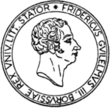„A Rose ist a rose is a rose…“ wrote Gertrude Stein – emphasizing and at the time questioning the symbolic significance of this flower.
In its sequence „Singular Art„, the Arithmeum is exhibiting a very special rose, the „Rose für direkte Demokratie“ of Joseph Beuys. This baccara rose with its long stem is in a tall, narrow, cylindrical glass measuring vessel with a scale, and also with the title and signature of the artist engraved on it.
The works of Joseph Beuys are based on the premise of comprehensive communication and form a medium for political-ethical involvement. In the late 1960s, Beuys announced his concept of „the extended meaning of art„, which includes political action. To this end, recognizable everyday gadgets can be incorporated into art work and events.
Beuys had already expressed the wish for a daily rose in his Office for Direct Democracy in Düsseldorf. And in his „Hundred Day Office for Direct Democracy“ at the documenta V in Kassel in 1972, the rose in a measuring cylinder became, for the first time, a vehicle not only for artistic but also for political ideas. By having a limited edition of such an art object, the inherent political idea reaches a greater number of people.
Beuys’ „multiples“ incorporate ideas and initiate a communicative process. In his office at the documenta in Kassel, Beuys canvassed against party dominance and for his idea of a direct democracy.
For Beuys, the rose is „a particularly simple and clear example and image of this evolutionary process with its revolutionary goal, because the rose is itself a revolution with respect to its growth. Its blossom does not appear suddenly but gradually, due to an organic process which is of such a nature that the petals are contained germinally in the leaves and grow out of these; calyx and petals are metamorphosed leaves.“
In contrast to the rose, the glass measuring cylinder is a stereo- metric, artificially technical, crystalline object, whose sole purpose is to determine just one scientific property of the matter that it con- tains: its volume. In this instance, the material it contains is water, which is gradually removed by the rose and which enables the latter to live on and to prolong the evolutionary process of growing, of metamorphosing the green leaves into red petals. Beuys’ „Rose für direkte Demokratie“ symbolizes the transition from a rigid, colourless system into an organic one, whose wellknown hidden reference to love Beuys certainly does not exclude in this context. In the Arithmeum, Beuys’ „Rose für direkte Demokratie“ is surrounded by the pictures of the concrete artist Elena Lux-Marx, which arise from a totally different concept. Here the bridge between art and the real world is not built by means of objects taken out of context – rather, the pictures embody a concrete reality of their own. Without the active participation of the viewer, the delicate grey of the „near-monochrome“ pictures never reveal their intrinsic colour spectrum.






